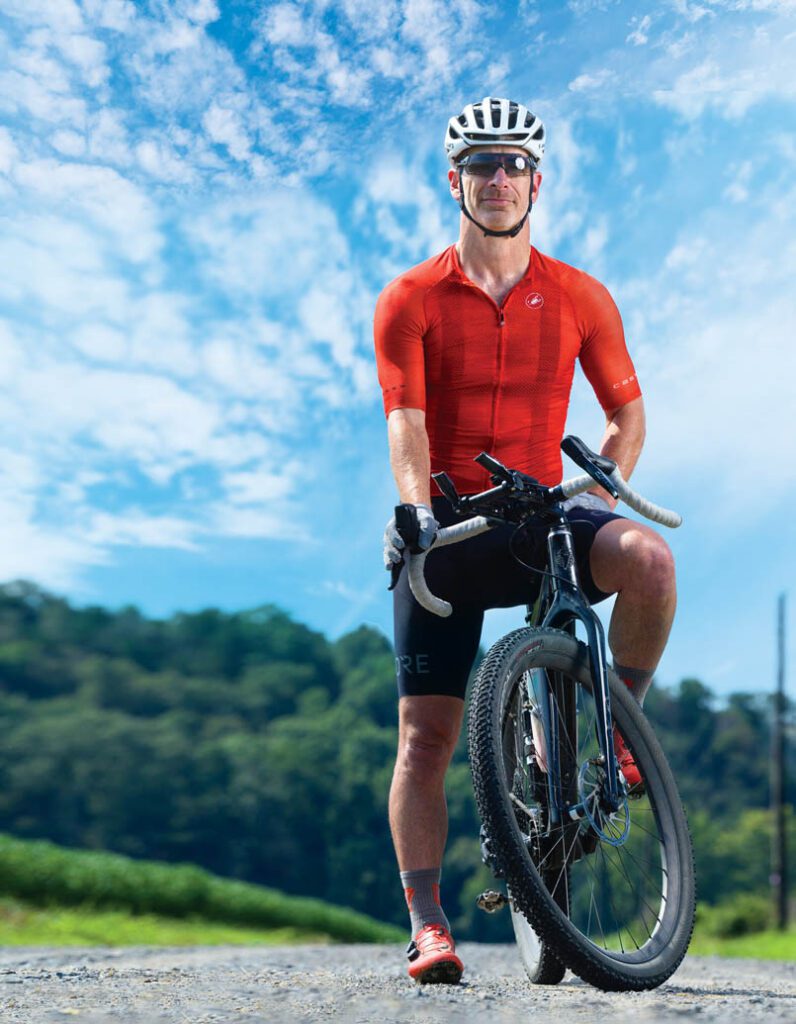29 Sep 2022 Keith Jordan’s ride of a lifetime
By Donna Lampkin Stephens
While Keith Jordan doesn’t expect others to duplicate his 2022 adventure — a bike ride from Canada to the U.S.-Mexico border — he does hope they are inspired by his effort.
“Don’t be afraid to step out there and do something,” Conway’s Jordan said of his big takeaway. “‘Scary’ isn’t the right word, but dream about something. Take action toward seeing that dream through.
“For 10 years or so, I was thinking about doing it, but there was always some reason I didn’t. Finally, instead of being 100 percent prepared, I just took the chance.”

“It” was the 2022 Tour Divide, roughly following the Great Divide Mountain Bike Route, crisscrossing the Continental Divide, starting from Banff, Alberta, Canada, on June 10 and finishing the 2,665 miles to Antelope Wells, N.M., at the border between the U.S. and Mexico, 24 days, 15 hours and 54 minutes later.
His Instagram account (m.Keith.Jordan) explains his motivation: “If you’re going to live, you might as well do painful, brave and beautiful things.”
Jordan, 50, said he has been doing some form of endurance competition for more than 20 years. Over the last decade, he transitioned into road racing and mountain biking, eventually completing a 425-mile road event in 32 hours straight.
“You’re always looking for something different, and this race caught my attention around 2010,” he said. “Only a few people were doing it; there were no prizes, no fanfare. You just go and do this thing with other like-minded people. It was very intriguing to me.”
That “it” was bikepacking. According to bikepacking.com, it is “the synthesis of all-terrain cycling and self-supported backpacking.
“It evokes the freedom of multi-day backcountry hiking and travel off the beaten path, but with the range and thrill of riding a nimble bicycle,” the website continues. “It’s about venturing further into places less traveled, both near and far, via single track trails, gravel and forgotten dirt roads, carrying the essential gear, and not much else.”
Jordan said over the years he’d find some excuse not to take the leap, but last November, he told his wife, Amy, he wanted to do it.
“Then through the spring, my training wasn’t where it should’ve been, and excuses came up,” he remembered. “Life is life, but one month out, I said, ‘I’m tired of thinking about it — what if I just go and do it? I’m not prepared; I’m not as fit as I should’ve been, but just go on and do it.’
“I went up to Banff, and I was terrified. I knew I wasn’t prepared, but I just thought, ‘One pedal stroke in front of the next.’”
His son dropped him off in Banff, and he was on his way, along with approximately 200 other cyclists from all over the world. On the route, participants are allowed to use anything that is publicly accessible — motels, campgrounds, restrooms, restaurants, etc. They must average 100 miles per day.
“There was a lot of snow in the mountains,” Jordan recalled.
“We had rainstorms, snowstorms. Some of the mountain passes, you’re hiking through snow for six or eight miles. We were caught in freezing rain.”
Logistics are a big deal. Participants have to be prepared for all scenarios — weather, food, bike repair.
“But there’s only so much you can bring,” Jordan said. “The route is off-road. I had everything I needed to sleep somewhat comfortably, fix my bike and dress comfortably for different climates. You’re having to think about things 24/7, so life becomes super simple. You’re thinking, ‘Where am I going to find food, water and sleep?’” He had enough food on him for the first three days.

“I knew at mile 50 there would be a convenience store for a few extra things, but I didn’t have access to any other food for another 24 hours,” Jordan said. “I had to make sure I had enough on me. We had two towns and one convenience store in three days.”
While the physical challenge was obvious, he said the mental aspect was also huge. “There were times in the early days I wanted to quit,” he said. “I did not verbalize it, but it was there internally. I didn’t give into it, though, and I just slept on it, and every day I felt better when I got back on the bike.”
His wife picked him up at the finish. Looking back, he called the experience “Type 2 fun.”
“It’s not fun in the moment, but afterward, you look at it as a positive experience,” he said. “I feel like there’s some things I’d like to continue to grow. That’s the reason I would go back. Plus, it’s absolutely a wonderful way to see the country.
“It was so scary when I was sitting at my house thinking about it, and at the start line, but once I was into it two or three days, I found a routine and a rhythm, and it wasn’t so scary.
“I learned I was brave enough to do something big.”
- Fits like a glove - December 2, 2025
- Petit Jean: The place for partnerships - December 1, 2025
- Youth of the Month: Emalee Jack Goforth and Bailey Fournier - November 4, 2025










